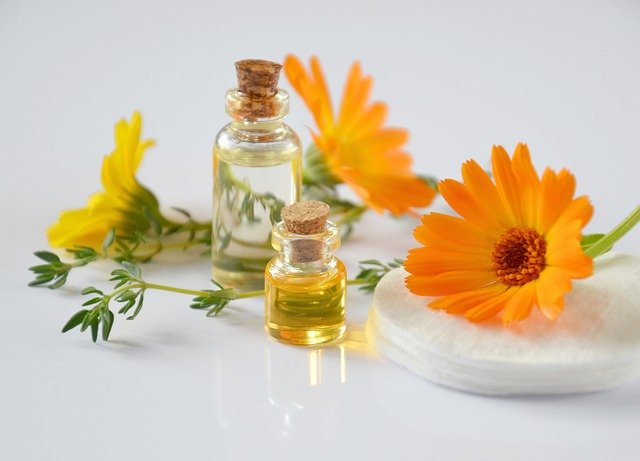The Calendula plant is familiar to most people as pot Marigold and is also well-known for its beautiful, deeply rich colored orange and yellow flowers. The plant’s botanical name is Calendula Officinalis and it belongs to the Asteraceae family. The name stems from the Latin word calendae referring to its unusually long blossoming time. It is important not to confuse Calendula, pot Marigold, with Marigold that belongs to the genus Tagetes. The Marigold of this genus is known by most people for being pretty, decorative garden flowers. Even though they are also part of the sunflower family, they are differentiated by their lack of medicinal purpose. The petals of the Calendula flower are edible, and the sweet-scented leaves can also be used in cooking. For centuries the aromatic perennial has been used as a medicinal plant and has found its way into the hearts and gardens of many plant enthusiasts.

According to the Chestnut School of Herbal Medicine, Calendula is best used internally and topically to treat a myriad of ailments, such as healing bruises, injuries and rashes. The beautiful flowers are used to create a ritualistic cure that not only supports the immune system but is famous for lifting a person’s spirits. The ray florets that make up most of the flower heads are also in great demand for their high level of antioxidants. It is important to use whole dried flowers from the Calendula plant, because the oils used for medicinal purposes are found in the resinous green foundation of the flower heads. Some variations of the Calendula plant contain more resin than others, which therefore suggests that they are more medicinally active.
The Calendula flower constitutes of active ingredients that are natural chemicals, such as triterpene, saponins, triterpene alcohols and flavonoids as explained by Very Well Health. These chemicals encourage wound healing by enhancing new tissue growth. It is also known for its properties in significantly decreasing inflammation. Research published in The Journal of Family Medicine and Primary Care revealed that the use of Calendula increased the healing time of wounds, more specifically surgical incisions. In the Journal of Wound Care, research revealed that there was an increase in the healing time of patients’ venous leg ulcers. Research also found that Calendula can be used to treat diaper rashes and that by applying it to specific skin conditions, it should decrease the inflammation, redness and swelling that is present. There is also evidence that Calendula treats bacterial vaginosis and is a good option for women who want to avoid taking prescription medication for it.

According to Web MD, there is some evidence that the following conditions can be benefitted by the use of Calendula; prostate swelling and pelvic pain, oral leukoplakia (white patches on gums), gum inflammation, peeling lips, diabetic foot ulcers, ear infections, leg ulcers, thinning of the wall of the vagina (vaginal atrophy) and pressure ulcers.
Furthermore, the Chestnut School of Medicine suggests that Calendula is a great digestive aid for people who experience heartburn as a result of a disease referred to as GERD (Gastroesophageal Reflux Disease). In the case of peptic ulcers Calendula can be taken concurrently with antibiotic therapy. It is also known for its properties to stimulate the lymphatic system, especially to treat chronically swollen lymph nodes caused by infection. It also assists in building the human immune system by protecting the body against infection.
Calendula as a topical remedy treats a myriad of skin conditions including abrasions, swelling, eczema, acne, insect bites, chicken pox, cold sores and postpartum perineal tears as is mentioned by the Chestnut School of Herbal Medicine. Not only can it be applied as an ointment and ingested in the form of tea, but it can also be used as a poultice, compress or soak for healing purposes. All the various forms in which Calendula can be used is excellent in relieving pain, infection and swelling.
Buzzi, M. e. (2016). Therapeutic effectiveness of Calendula officinalis. Journal of Wound Care, 2;25(12):732-739.
Jahdi, F. e. (2018). The impact of calendula ointment on caesarean wound healing: A randomized control clinical trial. Journal of Family Medical Primmary Care, 893-897.
Very Well Health. (2020). Health Benefits of Calendula. Retrieved from Very Well Health
Web MD. (2020). Vitamins and Ingredients Calendula. Retrieved from Web MD





